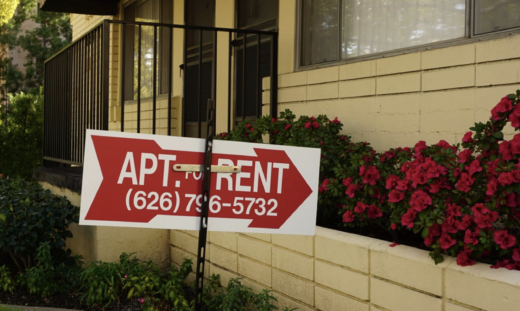California is in the midst of a housing crisis, with people paying more than ever before to keep a roof over their head. One big manifestation of that crisis is escalating rents. In many cities, it’s not uncommon for renters to now shell out $2000-$3000 a month for a modest apartment.
Many believe the best way to keep housing affordable is through strengthening and expanding rent control laws. But rent control doubters say that will only make our housing woes worse.
WHAT IS RENT CONTROL?
Rent control, also called rent stabilization, puts a cap on how much landlords can raise rents on apartment tenants from year to year. In most cities, increases are tied to the Consumer Price Index and can range from one to five percent annually. Rent control laws also set rules for eviction, so landlords can’t force tenants out just to raise rents. In exchange for restrictions, property owners are supposed to be a guaranteed a fair market return on their investment in buildings.
WHERE IS RENT CONTROL?
There are more than 450 municipalities in California, but only 15 of them have rent control laws on the books. They include most of the state’s costlier cities, like Los Angeles, San Francisco, Berkeley, West Hollywood and Santa Monica. Rent increases are often supervised by elected rent control boards.
WHAT DOESN’T RENT CONTROL COVER?
Rent control usually doesn’t apply to single-family homes and condos. Depending on the city, the year an apartment building was constructed also determines whether it is rent controlled. In Los Angeles, for example, most apartments built after 1978 aren’t rent controlled. Because of a state law passed passed in the 1990s, called the Costa-Hawkins Housing Act, apartment buildings built in California after February of 1995 also aren’t covered.
WHAT ARE THE ARGUMENTS FOR RENT CONTROL?
Tenant rights activists say that controlling rent increases is the best way to keep housing affordable and cities economically diverse. They also say without rent control, tenants in hot real estate markets would be exposed to enormous rent increases. Many activists also say that housing is so fundamental, it needs to be regulated like a public utility.

WHAT ARE THE ARGUMENTS AGAINST RENT CONTROL?
Landlords say it’s just wrong and smacks of socialism for local governments to tell property owners what price they can charge tenants. Many economists also argue that rent control actually increases housing costs by not giving developers a financial incentive to build more housing. That increased supply, they say, would reduce housing demand and lower prices.

WHAT IS VACANCY DECONTROL?
It’s a wonky term, but it’s used all the time in the rental real estate market. Vacancy decontrol allows property owners in rent controlled cities to reset rents to current market values when a tenant moves out. That means an apartment’s rent could immediately double or triple in price, depending on when it was last rented. The new tenant is still covered by rent control, but has to pay way more.
WHAT’S HAPPENING NOW WITH RENT CONTROL?
Many California cities passed their rent control laws in the 1970s and ’80s, but soaring housing costs have sparked a new rent control movement. In Los Angeles County alone, tenant activists are trying to put rent control measures on the ballot in Pasadena, Long Beach, Inglewood and Glendale. There are also efforts underway to get rid of vacancy decontrol, so landlords can’t reset rents to current market rates when tenants change.


